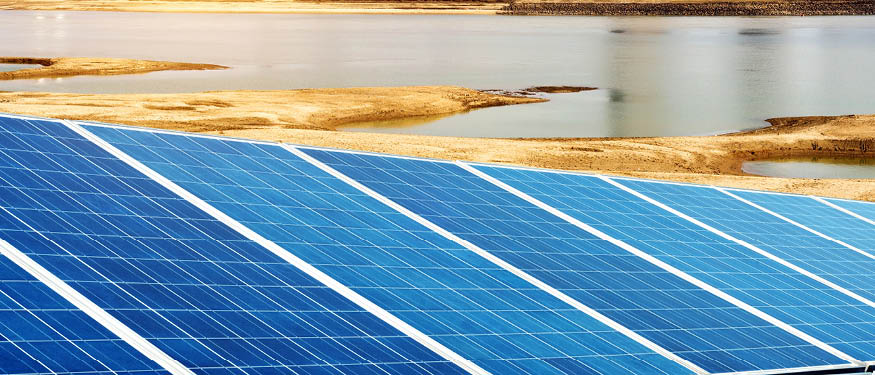CEE Legal Matters spoke with CMS Partners Agnieszka Skorupinska, Kostadin Sirleshtov, and Varinia Radu about the impact of ESG on the energy sector in CEE.
Growing Pains
“The energy sector is very much at the heart of the Green Deal and all the regulations around ESG,” says CMS Partner, CEE Head of Environmental Law Practice, and CEE ESG Lead Agnieszka Skorupinska to kick off the conversation. “For years,” she adds, “conventional energy production has been a strain on the environment, so it is no surprise that regulators looked at it closely when developing the EU Green Deal. As a result, these regulations have been, are, and will impose limitations on the sector – but that is complemented by stimulating renewables, which is a positive tendency.”
From a regulatory perspective, she notes that the Fit for 55 package will have a massive impact as it touches on the carbon trading scheme, renewables, taxation, alternative mobility, and introduces a carbon border adjustment mechanism with the “purpose to reshape the energy sector and not only.” In addition, according to CMS Partner and Romania Head of Energy and Climate Change Varinia Radu, the introduction of the Taxonomy was a momentous change as it brought together the sustainability criteria in the energy sector.
Taking a closer look at the CEE specifics, CMS Managing Partner of the Sofia office and CEE Head of Energy and Climate Change Kostadin Sirleshtov notes that developments in the field have been happening at break-neck speed, with some having difficulties keeping up: “I had a meeting with the Bulgarian Ministry of Energy yesterday and he explained that countries like Bulgaria and others are facing real challenges in keeping up with the speed of EU regulatory changes.” Indeed, Skorupinska notes the “Polish approach is to contemplate trying to challenge the legal basis of some of these updates by arguing that the EU is going too far and that, to adopt these changes, unanimity should be required.” Resorting to such technicalities, she says, might have a political drive behind it, but, ultimately, “we’ve simply seen a terrific jump over the last 20 years and it has been really hard to get here – with the unfortunate reality in the background that a lot more still has to be done – and we’re approaching the limit in terms of the time, money, and technology we have access to.”
Playing Catch-up
Why is it that CEE countries feel this burn more? Radu explains that CEE has been more reliant on fossil fuels traditionally: “more coal and more gas or other non-renewables have been the focus and we’ve been lagging in this wave of investments in renewables.” There is a variety of reasons for this, she explains, with the regulatory framework being a big one. “PPA’s were not an option for too many of our jurisdictions until recently, for example.” This, she adds, has been slowly addressed and the region is slowly catching up as EU states have been integrated more and more into the EU market, which provides predictability in these countries.
On this element of predictability, Sirleshtov notes that a distinction needs to be made between CEE markets since “M&A investment levels are dependent on their specific conditions.” Specifically, Sirleshtov says there is a “very limited number of countries that have close to zero retroactive measures” – with Croatia standing out in this regard. “Then we have countries with some negative measures registered but that are still seeing good returns,” he adds, pointing to Bulgaria, Poland, and Romania. Lastly, some imposed “heavy cuts,” like the Czech Republic, and “here we’ve seen quite some backlash from investors.”
But while Radu agrees that each CEE country has its own DNA, she reports an “increased appetite in renewables and new tech investments in Poland, Romania, Hungary, Bulgaria, and the Czech Republic.” She says this is both because of the environmental ESG element being at the forefront of investment drives these days and also “because we have the S aspect of ESG – the social aspect, which, in energy principles such as security of supply, affordability, and sustainability, starts leaving a mark.” This helps explain Sirleshtov’s assessment that “across CEE, the investment market is solid. We have far more buyers than the market could sustain – more investments are looking to be made than there are projects available.”
Skorupinska echoes the level of activity saying that, in Poland, there is “a huge number of investments in renewables with photovoltaic and wind plants at the forefront”. Commenting on the success of Poland in particular in renewables over the last few years, Sirleshtov explained that the country is both simply much bigger than most and it was a very coal-dependent country: “They were dragging their feet until the last minute on coal and now we see a huge influx of investors, I believe because the market opened up at just the right time, when incentives could be zero, or very close to it. We saw a big market opening up at the right time and with a very strong supply chain – very capable developers, construction, and maintenance companies.”
But Skorupinska mentions that some of that progress “might slow down in light of the geopolitical situation. We are still a strongly coal-focused country, and the current context might bring forward some new opportunities in coal, such as new mining opportunities that were not present.” And, commenting on how the current context has impacted the regional overview, Sirleshtov sighs and explains that, before the war in Ukraine, the country was looked at as a similar rising star for renewables.
The War’s Impact on Energy and ESG
What the impact of the war will be on the energy sector is “the million-dollar question” at this point, according to Sirleshtov, but he points out that the sector was facing a “challenging time even before it, due to the COVID-19 pandemic and the demand/supply challenges and regulatory changes.” On top of these, “the Russian invasion has created several short-term issues: it gave rise to concerns over the safety of nuclear plants (with Ukraine having 15 reactors and six plants), it exacerbated concerns over the security of supply of natural gas, and has led to international escalation with new sanctions being introduced every day.” The latter in particular, he says, “while justified from a diplomatic perspective, adds a layer of complexity that is challenging from an energy perspective.” According to him, some countries, such as Bulgaria, have imposed a moratorium on changing energy prices. Others, like Romania, have reacted by imposing a windfall tax for producers, according to Radu, who explains that this government scheme was already introduced in November but is now due to be extended for another year and is also complemented by capped prices for final consumers and the industrial segment. This, she argues, “has created significant distress for all market participants – producers, traders, suppliers. They’ve been crediting the market for two months now and compensation was due to start soon and this mechanism will be extended until March 2023.” And all of this is happening “just when we were enjoying finally achieving a deregulated market. We’re now going back to a regulated market which, while only temporary, may create a lot of distress for investors.”
And the conflict is influencing policies at an EU level, according to Radu: “gas is coming back at the forefront and we see more emphasis on investments in gas in Romania, for example, where we might see a new bid run for exploration to facilitate Black Sea investment decisions.” Another potential investment direction is in gas interconnectors, so Radu expects we’ll likely see oil & gas companies stepping up and increasing production – “or even go back to the drawing board to revisit some decisions such as OMV Petrom wanting to sell off some mature oil fields.”
Skorupinska notes that, “while looking at the developments in Ukraine, one might be afraid that the Green Deal might end up not being as strongly implemented, because it introduces a lot of limitations – I believe we will actually go further – we have to think about increasing energy efficiency and security by focusing on renewables, and that’s exactly what the Green Deal is promoting.” Skorupinska does acknowledge that some elements from the Fit for 55 package are “less likely to be feasible, such as the CBAM, because it would introduce additional costs.”
Looking at it from a broader perspective, Skorupinska predicts that ESG is becoming more important than ever, in light of the recent developments. She explains that ESG requires companies to look at their supply chain and the sustainability of that chain, which “some companies were not taking seriously enough. A day before the invasion, we had a draft come out – the Corporate Sustainability Due Diligence draft – which adds further obligations on checking one’s supply chain and making sure that it doesn’t violate human rights or harm the environment. This, I expect, will become all the more critical in the current climate.” Radu adds that “the directive will amend and increase the financial reporting obligation – with companies knowing they will be closely scrutinized on how they perform operations and what assets they acquire, which will have a huge impact on M&A.”
Ultimately, “the war in Ukraine was a wake-up call for various areas, but also for the energy sector,” says Sirleshtov. “Governments are now focused on the need for real diversification and interconnectivity,” which, he concludes, means that “despite the high price, will be taken on since energy independence and security of supply will be at the very top of every government’s agenda in the region.”
This Article was originally published in Issue 9.3 of the CEE Legal Matters Magazine. If you would like to receive a hard copy of the magazine, you can subscribe here.

























